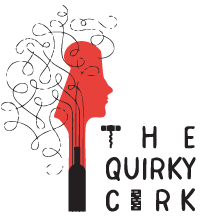
Albania: A New Wine Frontier
Wendy of A Day in the Life on the Farm invited our wine writers group to explore any (wine) topics that tickle our interest for 2025. We know I like wine from underappreciated and often unexpected countries, so I decided to use some newly acquired wine and explore Albanian wine.
I’ve yet to actually visit Albania, although it is pretty high on my list; and not just for wine! I spent years working on projects in Kosovo during which I visited Pristina many times and became rather enamored of Albanian music and literature. My Kosovar friends and colleagues tried to teach me some Albanian, all of which I’ve totally forgot. But my time in Kosovo, while many years ago, created an interest in Albania. Now, after so long in Turkey, I appreciate a lot of the parallels between the two countries.
Of course we have the Ottomans in common. Although that did go rather better for Turkey than it did Albania. But like Turkey, Albania has a long wine history and a rather overlooked modern wine industry. Evidence shows that wine production in Albania began in the Bronze Age and that they’ve been making wine for at least 3,000 years. Of course two World Worlds following on the heels of those darn Ottomans and the oppression of a post World War communist regime lead to the isolation of Albania from much of the rest of the world. Between that isolation and the Russian-communist preference for crappy sweet wine, Albania’s wine industry was largely crippled until recently.
Albania’s Wine Potential
Within the natural beauty of Albania lays an enormous potential for quality wine production. To the north, east, and south, Albania borders North Macedonia and Greece while the Adriatic and Ionian seas froth across its western shore. This gives Albanian vineyards a combination of Mediterranean and continental climatic conditions. Hot summers, cool nights, elevation (plantings range from 150-1000 m) and cold mountain winds, warm sea breezes, Albania enjoys fantastic growing conditions. The country is similarly blessed with a variety of soil types from sand, loess, and clay to alluvial and limestone.
Also like Turkey, Albania has a wealth of indigenous grape varieties as well as regional ones. For example, it shares Kallmet (aka Kadarka), Vranac, and Debinë (aka Debina) with a few of its neighbors. Its own grapes include Shesh i Zi (Black Shesh), Shesh i Bardhë (White Shesh), Pulës (or Puls; Pulsi), Serina, and Vlosh.
According to the Centre of Transfer of Agricultural Technology, the country boasts 107 (known) indigenous and regional grape varieties. Not all of them are currently being used in wine production though. Shesh i Zi and Shesh i Bardhë are the most widely planted, but 57 of the indigenous and regional grapes are cultivated for wine in addition to a huge range of international grapes (83 varieties according to the same research institute).
Albania has no geographically designated wine regions at the moment. Production is broadly categorized into northern, central, and southern regions.
Çobo Wine
My wines for this event came from Çobo Wine. This family-run winery, helmed by brothers Muharrem and Petrit Çobo, sits in Albania’s southern wine region, in Berat. Berat, both the county and the city (a UNESCO heritage city) have ancient roots extending back to the antique Illyrian tribes of the western Balkan Peninsula. The county has a generally Mediterranean climate. Much of the south is dominated by the limestone heavy Tomorr massif (known as the Throne of Gods) and Mount Shpirag while the north is mostly lowlands and plains.
For nearly a century the Çobo family has cared for its vines and produced wine, persevering through the tumultuous time of world wars and Soviet rule. Their production is under 100,000 bottles annually and spans still white and red wines as well as traditional method sparkling wine, brandy, and raki. They cultivate a mix of native and international grapes including: Puls, Shesh i Bardhë, Shesh i Zi, Vlosh, Cabernet Sauvignon, and Merlot.
All three of the wines I got from Çobo Wine were crafted from the Puls grape.
E Bardha e Beratit Puls, 2023
Like so many regional grape varieties, Puls went out of fashion under the Communist regime. In the 1950s, cultivation levels were so low, the grape was in danger of disappearing entirely. Çobo Wine is proud to have been instrumental in the grape’s resurrection and re-emergence onto the commercial wine scene. Traditionally grown as a “married vine” i.e. vines that grow up and around trees, the Çobo family has propagated the grape in vineyards with a more modern trellising system.
Brilliant gold with aromas of tropical and stone fruits, and pomelo, with creamy/custardy notes. But not a vanilla scented cream, more like a citrus custard/curd. On the palate it was medium-bodied and dry with a slightly oily midpalate and nice acidity. Flavors incorporated the fruits sensed on the nose along with the heady perfume of white flowers.
 I paired this with a harissa honey chicken and chickpea dish. I’d hoped the perception of sweetness in the wine would offset some of the harissa spice but no. The spice did not actually overwhelm the wine though, it was more like they existed on two separate planes.
I paired this with a harissa honey chicken and chickpea dish. I’d hoped the perception of sweetness in the wine would offset some of the harissa spice but no. The spice did not actually overwhelm the wine though, it was more like they existed on two separate planes.
Shëndeverë Silver Brut Nature, 2019
The name of Çobo Wine’s sparkling series, Shëndeverë, comes from the Albanian phrase shënd e verë which means ‘overcome by joy’. A beautiful name for a sparkling wine! The series includes two wines, Silver and Gold, both 100% Puls. Neither bottle listed a vintage, but the winery’s website seems to indicate that these are both from the 2019 harvest.
The Çobo Wine Shëndeverë Silver is a brut nature, aged between 18 and 24 months on the lees before disgorging.
Brilliant, soft golden color in the glass. A plethora of tiny and enthusiastic bubbles burst yeasty and fruity aromas. Baked pineapple and pear with yeasty notes with hints of tasted cashew. The full, soft mousse frothed with flavors that somehow reminded me of a pineapple mooncake and carried a long floral finish of elderflower.
I drank this with a few nibbles and found that it paired beautifully with elderflower jam and almond biscotti! It also went rather well with skin-on cashews and Devici pears, all of which may have influenced my tasting notes a touch.
SRP 30 Euros
Shëndeverë Gold Brut, 2019
There are several differences between the two Çobo Wine Shendeverë sparkling wines, aside from the price point. Both traditional method and both 100% Puls yes, but the Gold is a brut to Silver’s brut nature and spent a full 48 months months on the lees.
Appearance-wise they were quite similar with brilliant, medium gold color and enthusiastic, small bubbles. While the nose and palate of the Gold also shared similarities with the Silver (hardly surprising really) but it was as though the Gold were the HD version of the two. Everything was bigger and more intense. Fresh brioche and grilled caramelized pineapple with a warm citrus heart and floral details. The palate was bone dry with with exciting tension and frothy bubbles that left a lingering citrus memory as they dissipated. 
SRP 50 Euros
I think very little Albanian wine is yet exported, but if these wines are any indication, this country should definitely be on a wine lover’s trip list!
What are the other topics of interest for 2025?
- Terri of Our Good Life explores The Unveiling of Red Wine’s Hidden Health Benefits and the Surgeon General’s No-Alcohol Stance
- Gwendolyn of wine predator is Celebrating the New Year the Armenian Way: Ghapama and Lamb Kebabs Paired with Areni Wine from Yacoubian-Hobbs
- Wendy of A Day in the Life on the Farm is Exploring a Dealcoholized Wine
- Camilla of Culinary Cam discusses From Xers to Zoomers: Exploring the Decline in Wine Consumption + Our Thanksgiving Wines from Tablas Creek
- Jeff of Food Wine Click! explores Hot Topics: A Zero Alcohol Primer
- Jennifer of Vino Travels showcases The Alcohol Removed Wines of Starla
- Linda of My Full Wine Glass asks Non-Alcoholic wine: What’s all the hubbub?
- Robin of Crushed Grape Chronicles explains Wine and Food Pairings – exploring the logic and the science




January 16, 2025
robincgc
Fascinating! I must say the name for their sparkling line seems so poetic! And these wines sound delicious! A big thank you to the Cobo family for keeping the Puls variety alive!
January 16, 2025
admin
It is a lovely name! So perfect for such a special wine.